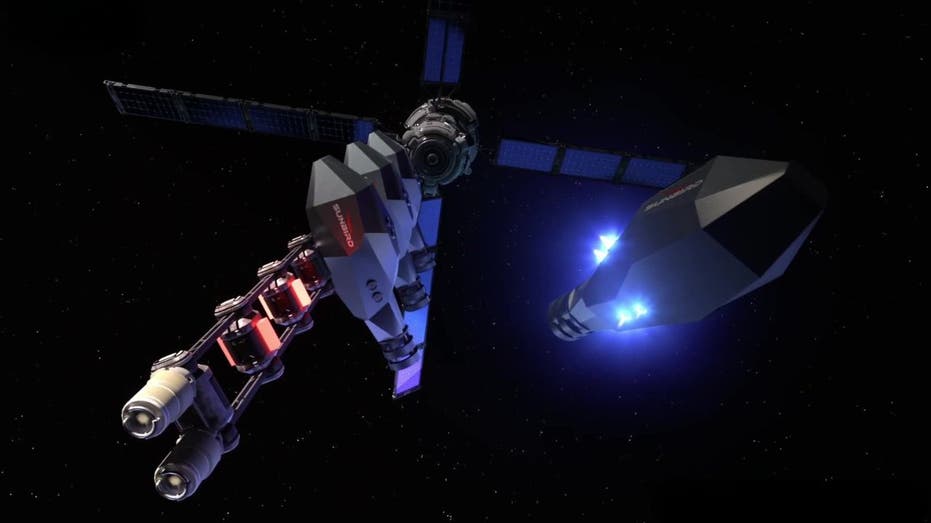329,000 mph Nuclear Rocket: Ushering in a New Era of Space Exploration

The Future of Space Travel is Here
Prepare for a transformative leap in space exploration as Pulsar Fusion, a pioneering aerospace company based in the U.K., unveils its revolutionary Dual Direct Fusion Drive. This cutting-edge compact fusion engine, designed to power the Sunbird spacecraft, promises to redefine how we travel to other planets by making missions faster, more cost-effective, and significantly more efficient.
Unimaginable Speeds: The Sunbird’s Potential
Imagine a spacecraft capable of reaching jaw-dropping speeds of nearly 329,000 mph. This is not just a fantasy; it’s a reality that the Sunbird aims to achieve through its advanced nuclear fusion propulsion system. This remarkable engine features a high specific impulse and an integrated 2 MW power system, crafted to serve as a reusable transfer vehicle for deep-space missions that were previously deemed unattainable.
The Dual Direct Fusion Drive: A Game Changer
The heart of the Sunbird is the Dual Direct Fusion Drive, engineered to generate thrust while providing continuous electrical power. This energy-efficient engine can deliver between 10,000 and 15,000 seconds of specific impulse, along with 2 megawatts of energy. In practical terms, this means that space missions can last longer and consume far less fuel compared to conventional rockets, fundamentally changing the economics of space travel.
Accelerated Missions to Mars and Beyond
The applications for the Sunbird are nothing short of astonishing. Picture this: the ability to transport between 2,200 and 4,400 pounds of cargo to Mars in under six months—around 60 days faster than current systems. This rapid transit could expedite crucial supply deliveries to the Red Planet. Additionally, the Sunbird could ferry probes to distant planets like Jupiter or Saturn in less than four years, all while powering scientific instruments in regions where solar energy is scarce.
Supporting Lunar and Asteroid Operations
As a reusable cislunar transport system, the Sunbird has the capacity to deliver up to 3,300 pounds of supplies to lunar orbit, facilitating operations such as fuel processing and spacecraft navigation. It could also make trips to near-Earth asteroids for resource mining, significantly reducing travel times and providing the necessary energy for drilling and material processing. Furthermore, it can support next-generation space telescopes in remote orbits, enhancing cryogenics and enabling real-time communications—thus expanding the frontiers of space observation.
Revolutionizing Orbital Operations
Achieving low Earth orbit is one of the most energy-intensive phases of space travel. The Sunbird’s design allows it to remain stationed in orbit, providing other spacecraft with the opportunity to dock and utilize the fusion engine for their journeys. This innovation could potentially reduce fuel storage requirements by up to 50% for missions targeting destinations like Mars or Jupiter.
Looking Ahead: Testing and Future Aspirations
Pulsar Fusion is set to commence static tests for the Sunbird this year, with an ambitious goal of demonstrating its capabilities in orbit by 2027. This critical demonstration will serve as a vital step in validating the innovative technology of the Sunbird in the challenging conditions of space.
The Future of Space Exploration
Despite the uncertainties surrounding government-funded space programs, private companies like Pulsar Fusion are driving forward with groundbreaking technologies. The Sunbird signifies a monumental advancement in space propulsion, with the potential to revolutionize our methods of exploring the solar system and beyond. This spacecraft could very well redefine the future of planetary science in the coming years.
Would You Take the Leap?
As we envision the Sunbird offering crewed missions in the future, one must consider: would you embark on a journey to Mars, fully aware of the risks and rewards of venturing into this uncharted territory? Share your thoughts with us at Cyberguy.com/Contact.
Stay Informed with Tech Insights
For more expert tech tips and critical security alerts, subscribe to the free CyberGuy Report Newsletter by visiting Cyberguy.com/Newsletter.
Engage with Kurt on Social Media
Follow Kurt on his social channels and stay updated on the latest in technology and security.
Copyright 2025 CyberGuy.com. All rights reserved.


